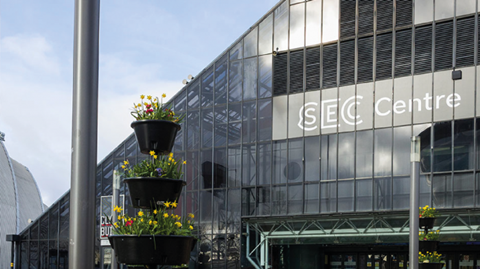Nordic real estate investor, NREP, has set out a roadmap to achieve being carbon neutral by 2028.

With the 26th UN Climate Change Conference of the Parties (COP26) due to start on Sunday in Glasgow, NREP says its proclamation is a ‘potential game changer for the industry’ as the accelerated action plan aims at net zero without offsets several years ahead of IPCC’s target date of 2050.
Claus Mathisen, CEO of NREP, said: ‘From the largest Nordic rooftop solar plant to embodied carbon concrete, NREP has always pushed the boundaries when it comes to ESG innovation and investment, and we have no intention of slowing down.’
‘To achieve the ambitious targets we have set, many technologies need to be deployed in parallel and at scale, and we are determined to demonstrate to the industry how this can be done.’
‘The built environment must take its rightful place in the global climate conversation and be both responsible and proactive; I am hopeful that the stark reality we’re faced with will accelerate a desire within the industry of wanting to leave behind a more positive social and environmental impact – something that NREP has been advocating for many years.’
NREP, which has AUM of €12.5 bn, said that as COP26 approached, it was proud to announce its ambition to become the first international real estate investor with a carbon neutral investment portfolio.
Its phased pathway incudes adopting the decarbonisation tools of the Carbon Risk Real Estate Monitor (CRREM), which provides tangible science-based targets for each property type and geography.
The initiative is supported by a team dedicated to this cause which has set the near-term goals for delivery by 2023, demonstrating the scale of intent.
It aims to reduce upfront embodied carbon by up to 33% from 2020 levels on new NREP developments. It also aims to reduce at least 50% of operational carbon emissions from 2020 levels.
The key tools to achieving these reductions will include applying internal pricing on carbon as well as leveraging innovative technologies, which NREP said it had been an early adopter of.
The company goes on to explains all developments will undergo early-stage life cycle analysis to enable design and material choices that significantly reduce embodied CO2 emissions.
It will be employing on-site and off-site renewables to generate carbon neutral electricity and heating, eliminating operational CO2 emissions.
Acknowledging that there will be residual emissions, NREP said it was taking ‘early action’ to capture CO2 through ‘real and impactful’ initiatives such as local forestation.
Furthermore, by 2025, NREP said it will complete the ground-up development of three large-scale, net zero innovation projects. These carbon neutral building prototypes – a residential and logistics project, as well as an office retrofit – will act as a benchmark for portfolio-wide construction practices as it moves towards its 2028 goal.
The entire building design and construction process will be re-engineered, leveraging the most innovative solutions to identify and solve any ‘pain points’ causing a gap in CO2 balance. To foster innovation, NREP also said it aspired to position itself as an open-source by sharing its progress and learnings along the way, and urges its peers to do likewise, to accelerate the industry’s delivery against a unified net zero mission.
Mathisen added: ‘The scale of the climate emergency becomes more apparent with each passing year. We are proud to be playing our part towards meaningfully reducing the built environment’s adverse impact on our planet by developing the scalable solutions that the industry needs, and which will help us meet our arduous 2028 target.’
‘The challenge should not be underestimated but we know that real estate has an enormous role to play in the transition to a zero-carbon economy and it has been hugely encouraging to see the sector galvanise ahead of COP26. But pledges alone aren’t enough – we need substantially more decisive action to protect our planet from the urgent environmental pressures that it faces and invite partners to join us in this movement towards making decarbonised cities a reality.’










